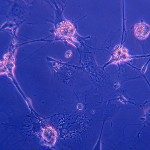PhD
Project Summary: The maintenance of Institut Pasteur Korea’s phenotypic screening facility requires a steady and consistent improvement of advanced cutting-edge screening technologies. The aim of our group is to further expand high content screening technologies in order to further investigate the relationship between cell and pathogen. Taking advantage of our multi-disciplinary team composed of biologist, biophysicist, and microscopy specialists, we are pursuing four lines of research. (1) To access physiological complex heterogeneous cellular disease models and their dynamic response to pathological stress, we are building imaging and data mining approaches to seamlessly integrate the analysis procedure of respectively single cell and time lapse data into our routine phenotypic screening process. Taking advantage of recent Far- & Infra-Red fluorescence proteins, we are developing High Content Small animal imaging approach using newly developed transgenic mice models reporting the evolution of inflammatory process. (2) As an essential step for quantifying cellular protein-protein interaction (PPI) network, and searching for PPI modulators, we are applying resonance energy transfer (RET) techniques to quantify PPI in live cells. The possibility to access the reorganization of the protein network occurring in a pathological context open novel opportunity for screening drug or target modulating PPI. (3) Combination of microscopy, automation, image and data analysis, allows us to further develop screening methods applied to functional genomics. In addition to siRNA technology, we are implementing CRISPR/Cas9 method for target identification and validation using infectious disease models. (4) At last, taking advantage of our multi-color image-based screening capacity, we are building fluorescent compound library, in order to seek for relevant biomarkers specific to infectious or chronic diseases.

